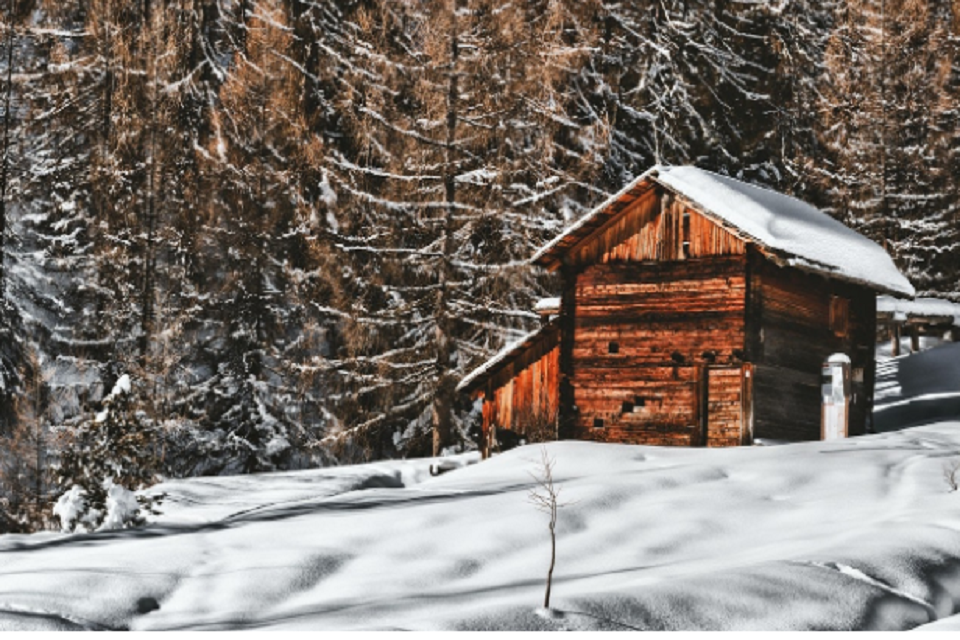Winter comes with a couple of great things: ice-skating and skiing, picturesque frosted sceneries, cozy fireplaces, warm sweaters, socks, scarves, and boots, and delicious peppermint hot chocolate and mulled wine. However, it may also bring a couple of not-so-great things… like expensive roof damage due to bulky snow and ice.
What is an ice dam?
An ice dam is the ice build-up that clogs the sections of your roof and keeps snow from sliding off. Aside from the blockage, the weight of the ice itself would be a major concern. Ice weighs more than 57 pounds per cubic foot —something your roof may not be equipped to handle.
While all of us looking forward to a lovely White Christmas that will make our days “merry and bright”, ice buildup can be a major inconvenience to homeowners, especially for buildings with flat roofs. Heavy loads of snow may lead to shingle damages, burden or stress to load-bearing walls, and even the total collapse of your roof.
Fortunately, ice buildup is easy and inexpensive to avoid.
This winter, don’t let snow turn your white Christmas into a disaster. We suggest 7 ways to keep snow off your roof and prevent possible damages.
1. Inspect your roof
Before winter comes, inspect your roof and check if there are any damages. Does it have loose, cracked, or missing shingles? Any leaks and weak spots? Does it need roof repairs? These damages can make your roof even more vulnerable to harsh weather conditions, like snow and ice so make sure you have these issues addressed by a professional roofer.
2. Unload your gutters and downspouts
You won’t have to worry about getting your roof damaged if you’ve worked on your snow build-up prevention in the first place.
Take the time to clear your gutters and downspouts. Debris, including the last batch of autumn leaves, will clog your gutters and potentially create potential damages when heavy snowfall strikes. Extra substances like pine needles can also hold moisture, which will then absorb rain, snow, hail, and ice from winter storms and block the drainage.
3. Keep nearby trees in check
You should also check the nearby trees and other roof hazards. Ice can pile up on loose tree branches, which will eventually end up on your roof. You may trim back trees well before winter comes.
4. Melt the ice with heating cables
Investing in heating cables is one of the things you can do. These are weather-resistant and insulated electric cables that heat your downspouts and overhangs, helping the snow slide right off your roof’s back. Place them along the sections of the roof or in gutters.
The only downside is its effect on your energy bills. Make sure you unplug then when the warmer season arrives.
5. Grab a roof rake
Scaping it off is one of the simplest things to do to get rid of the snow. You just need to have the right tool for the job. For a pitched roof, you may use a long-handled rake.
Avoid climbing on a ladder or on your roof to get rid of snow. Aside from being a potential safety hazard, you’d be adding more weight to the already heavy load of your roof.
Instead, inspect your roof beforehand for loose shingles, power lines, or tree branches that could catch on the roof rake and interfere. Begin at the edge of the roof and work your way in. You can even call in professionals to remove snow from your roof.
6. Insulate your attic
Protect the inside of your home from the snow and ice building up on your roof during a winter storm by insulating your attic. The mix of hot and cold can form condensation or moisture, which is bad for your home. With proper insulation, you prevent interior (warm) and exterior (cold) temperatures from merging.
It keeps the attic and the areas above the ceiling cold and in sync with the outside temperature, and the rest of your personal home care warm and protected from external elements.
7. Watch out for these warning signs
Most roofs can hold up to 20 pounds of weight per foot. Since snowfall is heavy, you should inspect your roof for signs of structural stress.
Can you tell whether or not your roof is risking damage after a heavy snowfall? Here are 5 warning signs.
- Are the ceiling tiles or boards sagging?
- Do you hear popping, creaking, and cracking noises?
- Check your interior doors. Do you have any difficulties opening or closing them?
- Do you see cracks in masonry or walls?
- Are you experiencing roof leaks?
If you answer “yes” to at least one of these questions, you may need to consider roof repairs. Consult with a contractor and know what you can do to increase your roof’s pitch and ease its burden.
Author Bio: Carmina Natividad is a blogger who once dreamed of becoming an interior designer. When she’s not browsing trendy home decor ideas and DIY home projects online, you can find her writing articles about home improvement and interior design. To know more about home improvement, you may visit All Round Roofing.


